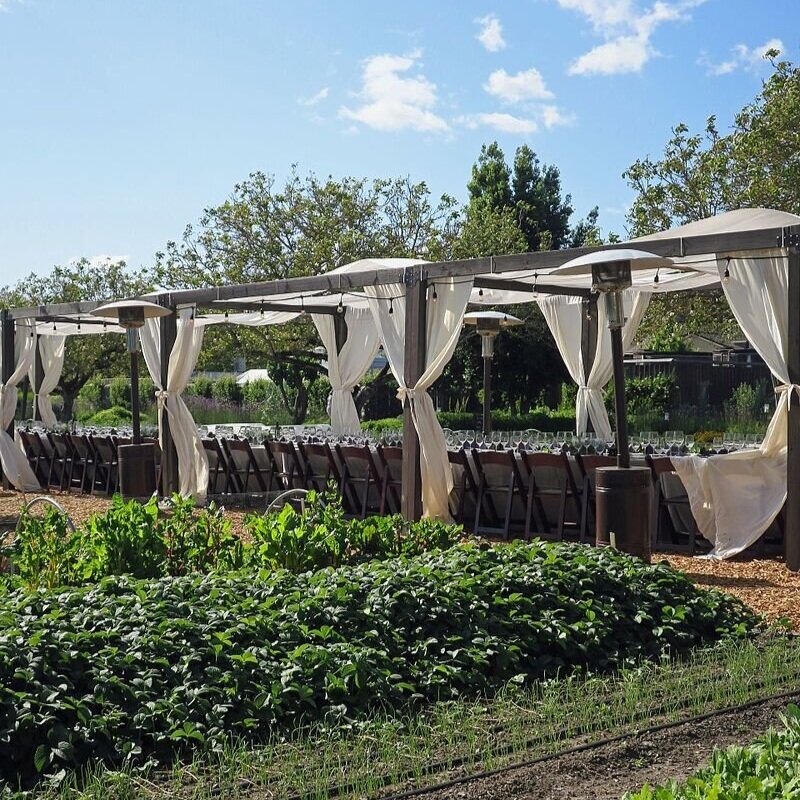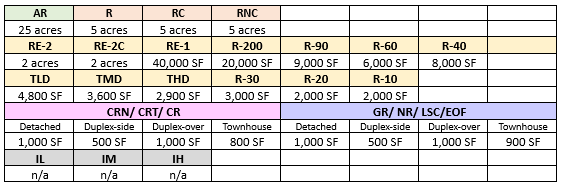What is agritourism?
It is part of Farming
Agritourism was first defined as a subcategory use of Farming. "Accessory agricultural education and tourism activities conducted as a part of a farm's regular operations, with emphasis on hands-on experiences and events that foster increased knowledge of agriculture, including cultivation methods, animal care, water conservation, Maryland's farming history, the importance of eating healthy, and locally grown foods. Allowed activities include corn mazes, hay rides, and educational tours, classes, and workshops." (section 3.2.6 Farming)
As "Farming" is the primary use in the Agricultural Zones and is permitted in the Rural Residential and Residential Detached Zones, it is essential to know the features and limitations when implementing an agritourism program on the property.
It invites guests for education, recreation, or active involvement in the farm
Since the former governor (Larry Hogan) recognized that agritourism attractions had become an essential source of revenue for many Maryland farmers, in 2018, the state of Maryland enacted new agritourism legislation. Further, it defined it as "An activity conducted on a farm that is offered to a member of the general public or to invite guests for education, recreation, or active involvement in the farm operation."
Whenever the property's opportunities include large-scale events for the public, it generally involves licensing or permits. Therefore it is good to know about the regulation of the benefit performance and the number of participants.
Benefit Performance (Section 30-4) is listed under Part II of the County Code rather than under the zoning ordinances, which are permitted in any zone. This rule allows indoor and outdoor concerts, fairs, or exhibits (whether charging admission or not) last for a maximum of 15 days.
On the other hand, when events are typical to the regular operations of a winery, brewery, or distillery, a maximum of 5 days of affairs is allowed each calendar year; there are no limitations on the number of guests. (Section 3.2.10B-viii)
When events accessory to the production of alcohol, such as weddings and retreats, the maximum number of participants is limited to 225 per event. If circumstances have less than 100 guests, a total maximum of 50 days are allowed in a calendar year. (Section 3.2.10B-ix)
Why does agritourism matter?
It matters because of its economic impact
Producing and selling alcoholic-related beverages have been a significant driver of agritourism nationwide. Maryland gained advantages from rapid expansion in the craft beer and wine industries. In 2006, the Maryland state produced less than two million gallons of beer. By 2021 that figure has increased to 17 million gallons (with 16.5 million gallons of beer and 0.6 million gallons of wine.)
It matters because it influenced the traditional eatery/dining industry
The added value and venture associated with alcoholic beverages also grew and made a trend in the industry. Many places in New York and California are known for "farm to table"; many breweries across Maryland are known for their "crop to keg."
A “crop-to-keg‘ concept is implemented in a farm brewery in Monkton, Maryland.Photos by Hazel
A “farm-to-table“ dinner at Kendall-Jackson that use produce from the winery’s on-site garden. Original photo credit: Sarah Stierch via Wikipedia
It matters because of its flexible and seasonal operation
Besides beer and wine's growth that leads to agritourism expenditure, agriculture education, and tourism, these programs are also allowed in the unplatted parcel to help landowners gain additional revenue.
Chapter 50, the Subdivision of Land, detailed several exemptions that do not require dividing nor conveying the unplatted land, and the accessory agricultural education and tourism is one of them(Section 3.3-9). This criterion is helpful not only for properties that have yet to be well-thought-out but also for neighborhoods that have large parcels. Agritourism-related activities and events are primarily outdoors and seasonal, which benefits various demographic groups.
Montgomery County minimum lot size for each zone
Image above table shows the minimum lot size for each zone. "Farming" use is permitted in the AR, R, RC, RNC, RE-2, RE-2C, RE-1, R-200, R-90, R-60, and R40 zones, which parcels are all greater than 8000 square feet.
It matters because of its educational and therapeutic features.
The list below is the popular agritourism activities, many of which have unique educational aspects. Moreover, many studies have found emerging in vegetation and natural settings can help us regain mental restoration. Many agriculture-related activities often require physical challenges or engagement, such as horse rides, pumpkin-picking, fruit-picking, farm-themed playgrounds, or on-site mini sports.
The list is the popular agritourism activities
Sustainable-added benefit when implementing agritourism programs on your site
If a property greater than 8000 square feet (most likely within the zones listed above) wants to host farming-related use on its site, the project would receive the following credits in various sustainability rating systems.
SITES 6.3- Promote Equitable Site Use
SITES 6.4- Support Mental Restoration
SITES 6.5- Support Physical Activity
SITES 6.6- Support Social Connection
SITES 6.7- Provide On-site FoodProduction
WELL M02- Natural and Place
WELL M09- Enhanced Access to Nature
Several beer-farms and wineries in Montgomery County have excellent agritourism opportunities within your reach. See the lists on the reference page.
Seasonal hayrides activities. Photos by Hazel
Historical farm artifact are displayed for farm tours
Activities conjunction to the agritourism
Using farm structure for on-site party and concert facilities
Historic barn as a significant element at the farm museum
Real-size wood shed with signage to educate agriculture history to visitors
Historical artifact are displayed at the farm museum
Historical house could be used for guests to stay at the farm
Seasonal petting farms
Petting activities conjunction with agritourism
Notes and References:
Find out more how Agritourism impact on our economy at Tourism Sales and Use Tax Revenue at Comptroller of Maryland.
Indutry’s production and trend projection information National Sale Beer Production Data and 2021 State Craft Beer Sales & Production Statistics
You can download Agritourism Study by Montgomery County planning department here.
Refer to Moco Made-Visiting Montgomery County for several beer-farms and wineries that offers excellent agritourism oppertunities within your reach. Places such as Brookeville Beer Farm, Elder Pine Brewing & Blending Co. Waredaca Brewing Company, Sugarloaf Mountain Vineyard, Rocklands Farm Winery & Market, are all located in a large-parcel neighborhoods.
Definition of Benefit Performance "A benefit performance includes an outdoor or indoor carnival, fair, picnic, dance, card party, bazaar, concert, contest, horse show, exhibition, lecture, barbecue, or dinner, to which the public is invited or admitted, with or without charge for admission." (Section 30-4)
Please refer to the source of the farm size: the Census of Agriculture 2017 full report, Maryland.















